
Charles Townshend, 2nd Viscount Townshend, was an English Whig statesman. He served for a decade as Secretary of State for the Northern Department from 1714 to 1717 and again from 1721 to 1730. He directed British foreign policy in close collaboration with his brother-in-law, prime minister Robert Walpole. He was often known as Turnip Townshend because of his strong interest in farming turnips and his role in the British Agricultural Revolution.
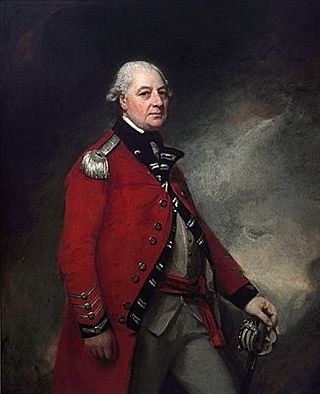
Field Marshal George Townshend, 1st Marquess Townshend, PC, known as The Viscount Townshend from 1764 to 1787, was a British soldier and politician. After serving at the Battle of Dettingen during the War of the Austrian Succession and the Battle of Culloden during the Jacobite Rising, Townshend took command of the British forces for the closing stages of the Battle of the Plains of Abraham during the Seven Years' War. He went on to be Lord Lieutenant of Ireland or Viceroy where he introduced measures aimed at increasing the size of Irish regiments, reducing corruption in Ireland and improving the Irish economy. In cooperation with Prime Minister North in London, he solidified governmental control over Ireland. He also served as Master-General of the Ordnance, first in the North Ministry and then in the Fox–North Coalition.

Harold Francis Davidson, generally known as the Rector of Stiffkey, was a Church of England priest who in 1932, after a public scandal, was convicted of immorality by a church court and defrocked. Davidson strongly protested his innocence and to raise funds for his reinstatement campaign he exhibited himself in a barrel on the Blackpool seafront. He performed in other sideshows of a similar nature, and died after being attacked by a lion in whose cage he was appearing in a seaside spectacular.
Aurelian Townshend was a seventeenth-century English poet and playwright.

Sir Roger Townshend, 1st Baronet, was an English landowner and politician who sat in the House of Commons in two parliaments between 1621 and 1629.

Sir Geoffrey Boleyn was an English merchant and politician who served as Lord Mayor of London from 1457 to 1458. He purchased the manor of Blickling, near Aylsham, in Norfolk from Sir John Fastolf in 1452, and Hever Castle in Kent in 1462. He was the great-grandfather of Queen Anne Boleyn, the mother of Queen Elizabeth I. Sir Geoffrey built the domestic, mercantile and civic fortunes of the Boleyn family, and raised its status from the provincial gentry, as his brother Thomas Boleyn made a career of distinction in church and university, together building the family's wealth, influence and reputation.
Colonel Robert Walpole was an English Whig politician and militia officer who served as a member of parliament for the borough of Castle Rising from 1689 to 1700. He is best known for being the father of Robert Walpole, the first British Prime Minister. Walpole is the ancestor of all the Barons Walpole and Earls of Orford, of all creations, and of the present Marquess of Cholmondeley, owner of Houghton Hall. He is also the Guinness World Records holder for having the world's longest overdue public library book.
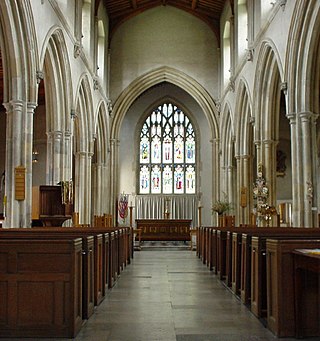
Sir Roger Townshend was an English nobleman, politician, soldier, and knight. He was the son of Sir Richard Townshend and Katherine Browne. He spent much of his career in the service of Thomas Howard, 4th Duke of Norfolk, and Norfolk's son and heir, Philip Howard, 20th Earl of Arundel. He was knighted at sea on 26 July 1588 during the battle against the Spanish Armada.
Sir Nathaniel Bacon, of Stiffkey in Norfolk, was an English lawyer and Member of Parliament (MP).
Sir John Townshend MP, of Raynham Hall in Norfolk, was an English nobleman, politician, and knight. He was the son of Sir Roger Townshend and Jane Stanhope. He was also a soldier and Member of Parliament. He was killed in a duel with Sir Matthew Browne in August 1603.
The Pettus Baronetcy of Rackheath in Norfolk, England, was a title in the Baronetage of England. It was created on 23 September in 1641 for Thomas Pettus, the High Sheriff of Norfolk. The sixth Baronet was the High Sheriff of Norfolk in 1746. The title became extinct on his death in 1772.
Sir Roger Townshend was an English landowner, knight and politician.
Major Philip Hamond was a decorated British Army officer who played a prominent part in the downfall of the Rector of Stiffkey. He later collected Norfolk folk songs.
Augustine Steward, of Norwich, Norfolk, was an English politician.
Sir Thomas Knyvet, of Ashwellthorpe, Norfolk and Stradbroke, Suffolk, was an English politician.
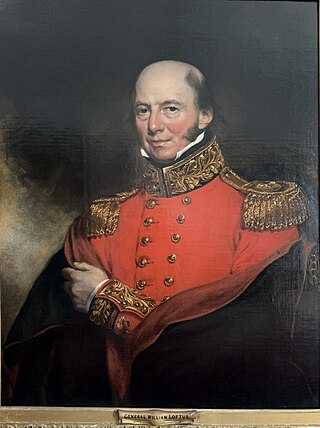
General William Loftus was a British Army officer and Member of Parliament.
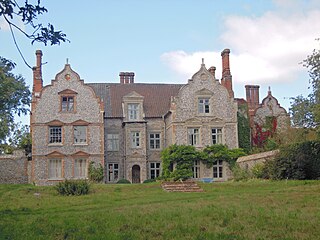
Wiveton Hall is a country house in Wiveton, Norfolk, England. It is Grade II* listed. It was built in 1652 and extended in 1908. However there are remains of an older building in the garden which could date back to 1280. It was the residence of many notable people over the next three centuries and is now the home of the MacCarthy family. The Hall provides holiday cottage accommodation, a restaurant café, a farm and gift shop and has garden tours. The West Wing is available for weddings and other special events.
Anne Townshend or Anne Bacon; Anne, Lady Townshend was a British Puritan gentlewoman and benefactor of Puritan causes.
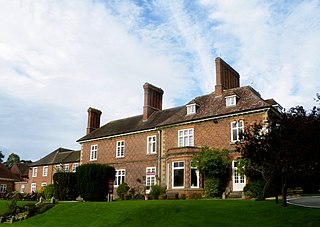
Albrighton Hall near Shrewsbury, Shropshire, is a house which is Grade II* listed on the National Heritage List for England. It was built in 1630 for the Ireland family and remained in this family for the next five generations until 1804. It was then the home of several notable people until 1953. In the 1990s it was converted into a hotel.

St John the Baptist and St Mary's Church is the parish church of Stiffkey in the English county of Norfolk. It is dedicated to St John the Baptist and the Virgin Mary; the double dedication is the result of, historically, there being two churches in the churchyard. St Mary's was deconsecrated in 1563, and abandoned; St John's then being renamed. The church is best known for its association with Harold Davidson, the Rector of Stiffkey who was defrocked in 1932 and subsequently killed by a lion in Skegness.












